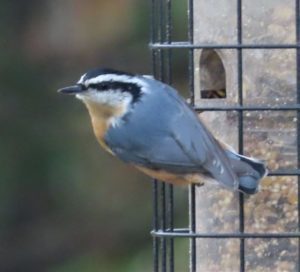Tuesday morning, following my weekly breakfast date with friends, I was almost home when I spotted some dark figures moving in a field adjacent to the road. At first, I drove past but quickly realised that I was probably seeing some Wild Turkeys, so I did a rapid but safe turnaround and confirmed my suspicion. My camera was with me, so my telephoto lens soon had “said Turkeys” in its frame, as they nonchalantly browsed the surrounding grasses. My pictures later revealed that most of them, although female, had beards! Yes! “Bearded Ladies” in Kemptville! Check it out for yourselves, https://www.turkeyandturkeyhunting.com/turkey-scratchings/turkey-hunting-blog/turkeys-365-all-about-turkey-beards It is something that I have never really noted before, but each had quite a long narrow hanging appendage of hair at the lower end of its neck, nearer to its body than its face. The bright red feature just below the chin is the “wattle” and a different part of the turkey’s facial features. That’s something else I have learned today after always assuming that the wattle was its only outstanding feature! Duh! I’d seen plenty of turkeys before, so didn’t spend a great deal of time dwelling on their presence there. But I did have time to witness three Rock Pigeons fly down to join them, so I left them to it.
 On arriving home, the weather still wasn’t too bad and I caught a glimpse of one of our “Upside-down” birds, though this one was not our usual White Breasted Nuthatch, it was its close relative – a Red Breasted Nuthatch! I plonked myself down on our front steps, kept as still as possible, and just watched all the bird activity on and around our feeders for the better part of an hour, getting outdoor photo-shots of them as they popped back and forth. It sounds easy but those little fellas and their Chickadee buddies don’t dwell too long on a feeder at all! They are in and out in an instant blur of colour and feathers before you have time to register their presence, let alone time to press the camera shutter switch to capture the moment. Even anticipating them is very hit and miss because they aren’t going to land momentarily exactly on the spot that you have your eyes and camera “trained on!” Sometimes you get a lucky shot which makes it all worth it, but like fishing, you sometimes are out of luck! Maybe you yourself have had better success at it than some of us others!
On arriving home, the weather still wasn’t too bad and I caught a glimpse of one of our “Upside-down” birds, though this one was not our usual White Breasted Nuthatch, it was its close relative – a Red Breasted Nuthatch! I plonked myself down on our front steps, kept as still as possible, and just watched all the bird activity on and around our feeders for the better part of an hour, getting outdoor photo-shots of them as they popped back and forth. It sounds easy but those little fellas and their Chickadee buddies don’t dwell too long on a feeder at all! They are in and out in an instant blur of colour and feathers before you have time to register their presence, let alone time to press the camera shutter switch to capture the moment. Even anticipating them is very hit and miss because they aren’t going to land momentarily exactly on the spot that you have your eyes and camera “trained on!” Sometimes you get a lucky shot which makes it all worth it, but like fishing, you sometimes are out of luck! Maybe you yourself have had better success at it than some of us others!
On a slower note, I also saw a White Throated Sparrow with its distinctive yellow markings just above its eyes still visible, although it was not in its full summer plumage.
Remember, whatever you capture on camera or see, just enjoy the experience and remember to always stay safe and well.
Cheers,
John Baldwin



